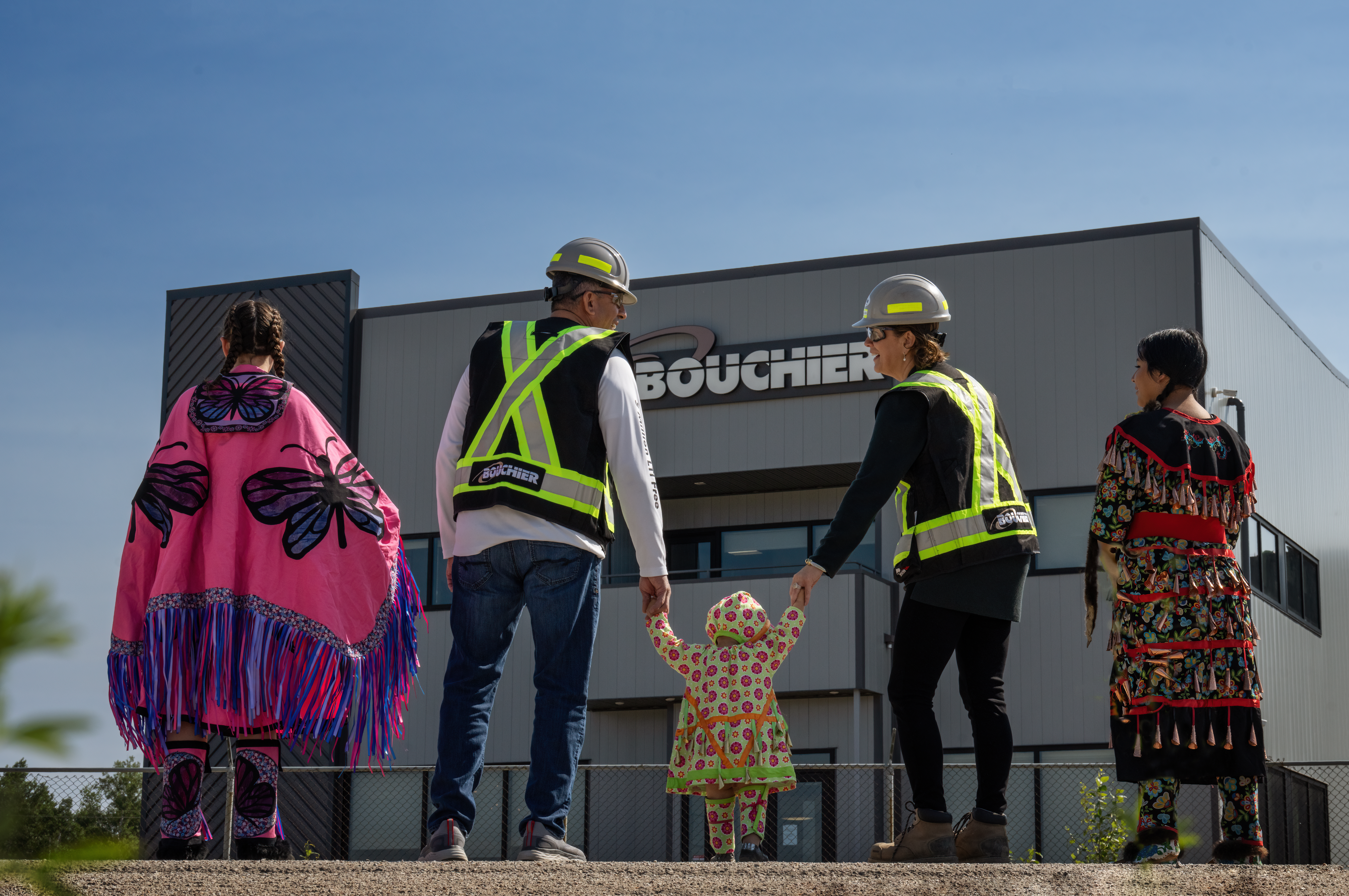Oil sands offers a job tree with many branches
April 15, 2025

Sherill Hynes understands the limitless opportunities in the oil sands because she has travelled that path in her own career. The chartered accountant moved from crunching big numbers as a business analyst in the first part of her career to overseeing shovels, haul trucks and heavy equipment as a senior leader in Suncor’s Base Mine north of Fort McMurray.
“It’s the same business but a very different world,” says Sherill, who switched careers in 2016. “But it’s an example of how this industry provides different roles and opportunities for its people to grow their career.”
Sherill’s story isn’t unique in an industry shaped by new technologies since the first commercial oil sands operation started in 1967. Almost 60 years later, a new report sees the sector’s need for skilled professionals and trades continuing for the next generation of professionals and skilled trades. Careers in Energy, which works with governments, industry, educators and training agencies to support workforce development in energy sectors, released its National Labour Market Outlook to 2035.
The report estimates that Canada’s oil sands operations will need to replace more than 7,000 workers due to retirement by 2035.
And that age-related attrition means industry needs to start recruiting now, says Gurpreet Lail, President and CEO of Enserva, an industry group representing Canada’s energy services, suppliers and manufacturers.
“We still need people to come into this industry well before 2035 as we will start to lose institutional knowledge if we don’t start backfilling that pipeline now,” says Lail. “And part of the issue is young people have been told over the past decade that oil and gas have been a dying industry, which has led to them looking elsewhere and skewed the demographics of the workforce.”
Enserva has responded by launching the Working Energy online portal, which matches students to jobs within the industry. But she believes high schools, in particular, need to highlight trades as a viable career option for students.
“I was driving my 16-year-old son to a basketball game and four of his friends were in the car. I was on a call with a government official discussing how to promote trades with students,” she says. “And when we dropped his friends off, he told me they all wanted to know about a career in the trades. It was something their guidance counsellors have not discussed with them. That needs to change.”
At 26, Jenn Valentine is just 10 years older than Lail’s son and works as a power engineer at Cenovus’ Pikes Peak South in situ facility near Lloydminster. Her exposure to the oil sands didn’t come until she attended Sask Polytechnic after high school.
“When I was younger, I wanted to be a veterinarian because I grew up on an acreage with horses and donkeys. But I didn’t have the stomach for it after job shadowing the vet who treated our animals,” says Valentine, who grew up just outside Saskatoon. “My stepdad was a power engineer and I always enjoyed working with my older brother in the shop trying to fix vehicles. It seemed like a great fit for me.”
A summer student placement and scholarship with Husky Energy brought a full-time job offer at the plant where she works today.
“I love this job because there’s a lot of thinking involved in it, from troubleshooting problems, planning job scopes or taking down large equipment for maintenance and then bringing it back online,” says Valentine, who works in the plant that removes sand from the oil, which is cooled down before being shipped down the pipeline. “It’s very similar process to what my brother and I did in the shop when we were fixing vehicles.”
Six years into her career, Valentine has no regrets about working in the oil sands and would encourage people in high school to take a good look at it.
“I know there’s people who think it’s an industry on the way out but they don’t realize how many products in our day-to-day lives rely on oil and gas,” she says. “The oil sands is a great career opportunity with lots of different career paths and operating environments. I’m excited about my future.”
While direct employment in production will remain relatively stable in the oil sands, other associated sectors will grow. The labour outlook also projected increased investment in carbon capture and storage (CCS) infrastructure to reduce the sector’s emissions, leading to a surge in employment in that sector, from 130 direct jobs currently to between 370 and 600 by 2035.
Building this new CCS infrastructure and maintaining existing oil sands infrastructure will continue to see demand for skilled labour in indirect employment, says Sean Strickland, executive director of Canada’s Building Trades Unions.
“The oil sands is not a sunset industry. It’s one of the top three employers for industrial construction in the country along with automotive and power generation,” says Strickland, whose group representing 600,000 members coast to coast and 60,000 in Alberta. “The oil sands have been a job creator and sustainer for our members over the past four decades. About 80 per cent of our members in Alberta work in the oil sands and related activities, such as turnarounds, construction and maintenance. Some of these projects continue to attract skilled trades from across the country.”
And Strickland is bullish about the potential for job creation.
“We see a tremendous opportunity to reduce or remove carbon from energy production for our members and the industry. We don’t want to see our producers penalized for failing to reduce their carbon emissions,” he says. “Industry will need a steady requirement of skilled trades to maintain oil production but there’s a real growth opportunity in decarbonization projects. These projects will require the same skilled labour that previously built upgraders, refineries and pipelines.”
And almost all of the 60 different trades and occupations represented by the umbrella labour group.
“Welders are always at a premium, particularly those with specialized tickets, but there’s plenty of demand for steamfitters, pipe fitters, ironworkers and electricians,” Strickland says. “The civil trades – labourers and carpenters who build scaffolding – are also sought after in the oil sands. And it’s an industry where you can progress your career as a skilled trade. There’s supervising, estimating, project management – the career path is very open.”
Experience and skills are valuable even in new roles, something Hynes has experienced.
“My background as an accountant has been extremely helpful in working in the mine,” says Hynes, Business manager for mine operations – trucks and shovels, at Suncor’s Base Plant Mine. “Suncor is a cash-conscious organization with clear targets of lowering how much we spend to produce a barrel of oil. My background really helps when we look at the benefit we gained for the dollars we spend in our group, whether it’s a new product or a process to become more efficient.”


